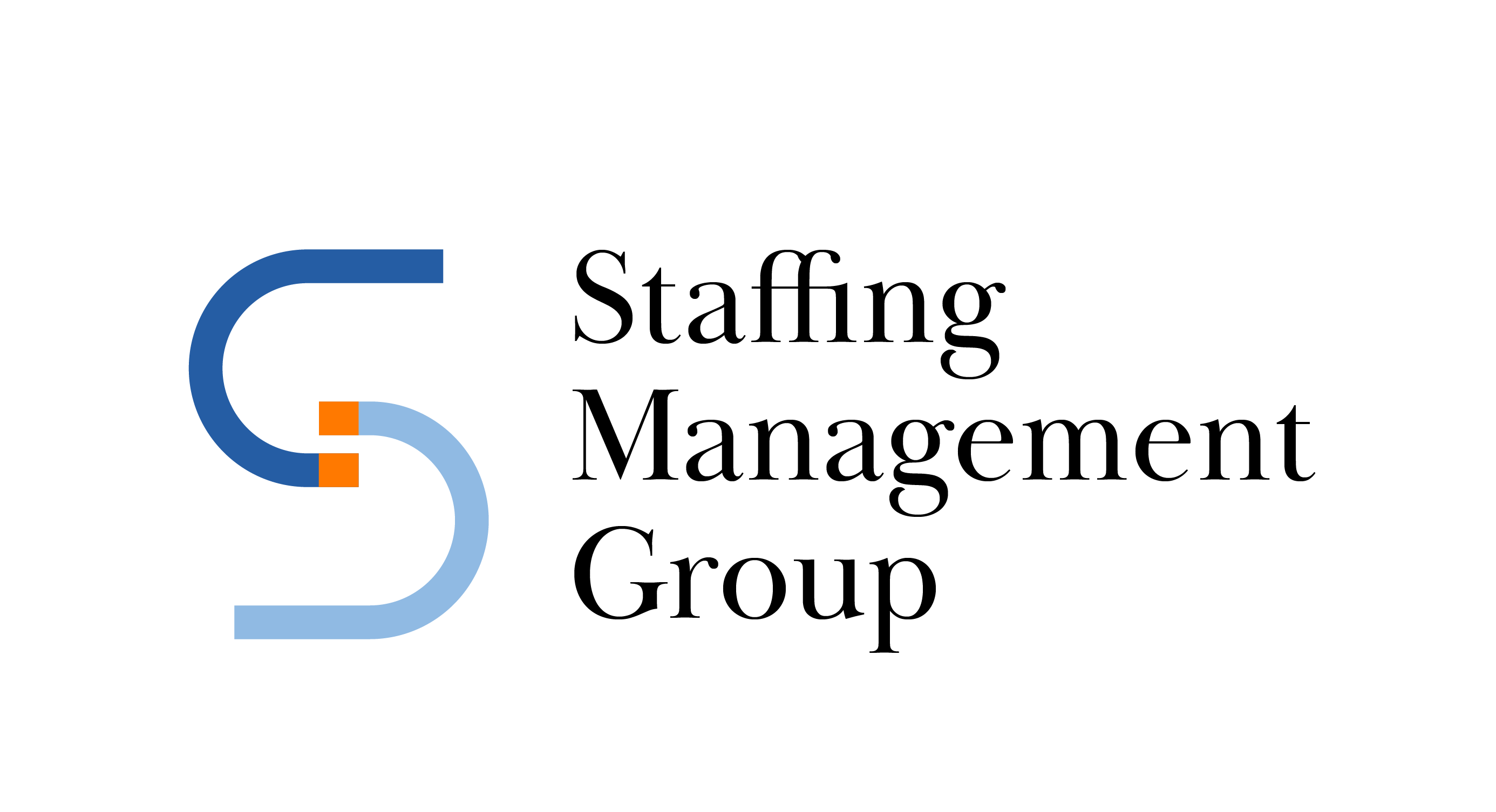Skills-Based Hiring Takes Center Stage: Practical Steps for Recruiters
You’re still sifting through resumes, looking at degrees and job titles, aren’t you? Meanwhile, 76% of employers now prioritize skills over traditional credentials. The gap between your hiring practices nd how the market is evolving keeps widening.
Skills-based hiring isn’t just another HR buzzword. It’s the practical solution to finding hidden talent when degree requirements are screening out your top candidates.
I’ve watched countless recruiters transform their hiring processes, ditching outdated methods for skill assessments that predict job success. The results? Faster fills, more diverse teams, and candidates who stick around.
But here’s what nobody’s talking about: Implementing skills-based hiring doesn’t require overhauling your entire recruitment strategy overnight. The slight shifts matter most.
Understanding the Skills-Based Hiring Revolution

A. Why Traditional Hiring Methods Are Failing
The resume-and-degree approach is broken. Plain and simple.
Companies spend months hunting for “perfect” candidates with impressive alma maters and fancy titles, while ideal hires slip through their fingers. Sound familiar?
What’s happening is that traditional hiring focuses on the wrong things. A degree from 15 years ago tells you almost nothing about what someone can do today. And those job titles? They vary wildly across industries and companies.
Meanwhile, the skills gap keeps widening. Over 87% of organizations already report critical skills shortages or expect them within a few years. The old playbook just isn’t working anymore.
The biggest problem? Traditional methods create massive blind spots:
- Overlooking talented career-switchers
- Missing self-taught experts
- Ignoring non-traditional education paths
- Perpetuating systemic biases
B. Benefits of Focusing on Skills Over Credentials
Skills-based hiring flips the script entirely. Instead of asking “where did you learn?” you ask “what can you do?”
The payoff is immediate:
- Wider talent pools (think 70% larger!)
- Faster time-to-hire (cut by 3-4 weeks on average)
- Higher retention rates (up to 30% improvement)
- Dramatically more diverse teams
This approach connects what people can do with what your company needs. Novel concept, right?
Skills assessment gives you real data instead of gut feelings. When ACME Tech switched to skills-based assessments, they saw performance predictions improve by 58% compared to resume screening alone.
And here’s the kicker – it’s fairer. Skills assessments level the playing field for candidates from all backgrounds.
C. Real-World Success Stories from Leading Companies
IBM revolutionized its hiring by removing degree requirements from over half of its US job postings. Result? Their tech roles now include 50% more candidates without traditional degrees, all performing at the same high level.
Shopify ditched resumes entirely for their developer roles. Instead, candidates complete real-world coding challenges. Their engineering director reports: “We’re getting phenomenal talent we would have completely missed before.”
Even traditional giants like Bank of America have jumped in. Their skills-first approach helped them hire 10,000 people from low-income communities, with retention rates outperforming traditional hires by 25%.
The pattern is evident across industries. Companies that switch to skills-based hiring see:
- Higher-quality candidates
- More diversity
- Better performance
- Lower turnover
D. Key Statistics That Make the Business Case
The numbers behind skills-based hiring are impossible to ignore:
- 76% of workers believe skills are more reliable indicators of job suitability than education or experience
- Companies using skills assessments see a 63% reduction in bad hires
- Roles filled through skills-based methods show 41% higher productivity in the first year
- Diverse teams (a natural outcome of skills-based hiring) are 35% more likely to outperform competitors financially
The cost angle is compelling too. Traditional hiring mistakes cost between 30% and 150% of the role’s annual salary. Skills-based approaches cut that risk dramatically.
Looking forward, 92% of executives believe skills are becoming more important than degrees in their hiring decisions. The revolution isn’t coming – it’s already here.
Identifying Critical Skills for Your Organization

Conducting Effective Skills Gap Analysis
Want to know what’s holding your company back? It’s probably sitting right there in your skills gap.
A proper skills gap analysis isn’t just another HR checkbox. It’s your roadmap to understanding what talents your team has versus what they need to crush your business goals. Start by documenting the skills your current workforce possesses through surveys, performance reviews, and manager feedback. Then map those against what you’ll need to stay competitive over the next 1-3 years.
The gap? That’s your hiring and training priority list.
Aligning Skills Requirements with Business Goals
Your business strategy and skills strategy can’t exist in separate universes. They need to dance together.
If you’re planning to launch new tech products, you’d better have developers who understand those technologies, especially if you’re expanding internationally. You need people with language skills and cultural competence.
Map out your 12-month, 24-month, and 5-year business objectives, then work backward to identify the exact skills needed to achieve each milestone. This prevents the all-too-common scenario where recruiters are frantically searching for talent that should have been developed months ago.
Creating Detailed Skills Inventories by Role
Generic job descriptions are killing your hiring process. Full stop.
Instead, build comprehensive skills inventories for each role. These aren’t just bullet points of responsibilities—they’re detailed breakdowns of:
- Technical competencies (ranked by proficiency level needed)
- Software/platform expertise
- Soft skills with behavioral examples
- Problem-solving capabilities specific to the role
- Industry knowledge requirements
For example, don’t just ask for “Excel skills”—specify “ability to create pivot tables and perform complex data analysis using Excel’s advanced functions.”
Involving Department Leaders in Skills Definition
Recruiters can’t define critical skills in isolation. That’s a recipe for bad hires.
Department leaders have invaluable frontline perspectives on what makes someone successful in their teams. Set up structured skills-definition workshops where leaders can:
- Identify emerging skills needs in their area
- Rate the importance of different competencies
- Provide real-world examples of how skills manifest in excellent performance
- Help distinguish between “must-have” and “nice-to-have” skills
These conversations often reveal surprising insights about which skills are key to success versus which ones look good on paper.
Prioritizing Technical vs. Soft Skills
The eternal debate: technical chops or people skills?
The answer isn’t either/or—it’s understanding the right mix for each role. Some positions genuinely require technical mastery above all else. Others need relationship-building superpowers with just enough technical knowledge.
Create a skills matrix that weights different competencies based on:
| Skill Type | Junior Roles | Mid-Level | Leadership |
|---|---|---|---|
| Technical | 70% | 60% | 40% |
| Soft | 30% | 40% | 60% |
Remember: technical skills get candidates through the door, but soft skills determine how far they’ll go in your organization. Both matter, just differently across career stages.
Redesigning Job Descriptions for Skills-Based Hiring

A. Eliminating Unnecessary Degree Requirements
Gone are the days when a fancy degree was the golden ticket to getting hired. Savvy recruiters now realize that those degree requirements are often just filtering out exceptional talent.
Take a hard look at your job descriptions. Does that marketing role need a bachelor’s degree, or do you need someone who can write compelling copy and analyze campaign data? That IT position – is a computer science degree essential, or are you looking for someone who can code in Python and troubleshoot network issues?
The stats don’t lie: IBM found that 50% of their IT roles don’t require a four-year degree. They’re not alone – major companies like Google, Apple, and Bank of America have all dropped degree requirements for many positions.
Try this quick exercise: Circle every degree requirement in your job posts, then ask, “Can I test for this skill directly instead?” Most times, you’ll find the answer is yes.
B. Emphasizing Demonstrable Skills Over Experience
“5+ years of experience required” might be the most significant talent-blocking phrase in recruitment history.
Instead of asking for arbitrary years, get specific about what candidates should be able to DO:
- Replace: “3+ years managing social media accounts”
- With: “Create and schedule content across platforms that generates engagement”
Skills trump time served every time. A candidate with 2 years of high-impact experience often outperforms someone with 5 years of going through the motions.
Your job descriptions should read like a skills checklist, not a time-served sentence. Focus on outcomes: “Build responsive websites that load in under 3 seconds” beats “3 years web development experience” any day of the week.
C. Using Clear, Inclusive Language to Attract Diverse Talent
Your job description is secretly working as a filter – make sure it’s filtering for talent, not demographics.
Those masculine-coded words like “competitive,” “dominant,” and “rockstar”? They’re silently pushing women away from your posting. Gender-neutral language expands your talent pool dramatically.
Ditch the insider jargon, too. Industry buzzwords might seem impressive, but they alienate qualified candidates who don’t speak your company dialect.
And please, for everyone’s sake, stop with the unrealistic “unicorn” requirements. That entry-level position requiring mastery of 15 different skills and tools? Nobody’s buying it.
Simple changes make huge differences:
| Instead of | Try |
|---|---|
| “Aggressive self-starter” | “Proactive team member” |
| “Ninja-level coding skills” | “Strong programming abilities” |
| “Culture fit” | “Contributes to our values” |
D. Including Skills Assessment Information
Here’s something candidates want to know: how you’ll evaluate them.
When you outline your assessment process right in the job description, you immediately signal transparency and fairness. Candidates can prepare appropriately, and those who aren’t confident in those skills will self-select out.
Be specific about your evaluation methods:
- “Candidates will complete a 45-minute coding exercise focusing on API integration.”
- “The interview includes a mock client presentation (15 minutes)”
- “You’ll be asked to analyze a sample dataset and present insights”
Explaining your assessment criteria also reduces bias when everyone knows what “good” looks like, hiring decisions become more objective.
The best part? Including assessment details improves your application quality. You’ll get fewer but better applications from candidates who know they can demonstrate the skills you need.
Implementing Effective Skills Assessment Methods

A. Structured Skills-Based Interviews
Gone are the days of asking candidates where they see themselves in five years. Skills-based interviews cut through the fluff and focus on what matters.
The trick? Ask questions that require candidates to demonstrate specific skills in action. Instead of “Are you good at problem-solving?” try “Tell me about a time when you encountered a complex data issue and how you resolved it.”
Create a scoring rubric beforehand with clear criteria for each skill. This keeps your team aligned and reduces bias. Something like:
| Skill Level | Description | Example Response |
|---|---|---|
| Exceeds | Demonstrates mastery with innovative approaches | Created an automated solution that addressed the root cause |
| Meets | Shows competency with concrete examples | Systematically identified and fixed the issue |
| Developing | Basic understanding but limited application | Sought help after initial attempts failed |
B. Job Simulations and Work Sample Tests
I want to see if someone can do the job. Make them do a slice of it.
These real-world tests show you precisely what candidates can deliver. A developer codes a minor feature. A marketer creates a campaign concept. A project manager builds a timeline.
The beauty is in the revelation – talk is cheap, but work samples show the goods.
Keep simulations short (1-3 hours max) and compensate candidates for substantial projects. Nobody likes feeling exploited.
C. Technical Assessment Platforms
Tech has transformed skills testing. Platforms like CodeSignal, HackerRank, and Criteria provide standardized assessments that scale beautifully.
The best part? They handle everything from delivery to scoring, saving your team countless hours.
Choose platforms that:
- Align with your specific skill requirements
- Minimize bias with blind testing features
- Offer customization options
- Provide precise analytics on results
D. Portfolio Reviews and Case Studies
Sometimes the best predictor of future work is past work.
Structured portfolio reviews shine for creative and technical roles. Don’t just glance at the work – ask probing questions:
- “Walk me through your process on this project.”
- “What constraints did you face, and how did you overcome them?”
- “If you could redo this project, what would you change?”
For case studies, present realistic scenarios your team has faced. The candidate’s approach reveals their thinking process, not just the final answer.
E. Behavioral Assessment Techniques
Skills aren’t just technical – they’re also about how people operate.
Behavioral assessments uncover those crucial soft skills like collaboration, adaptability, and communication. The STAR method (Situation, Task, Action, Result) remains the gold standard here.
Mix in situational judgment tests where candidates respond to realistic workplace scenarios. These reveal decision-making patterns and value alignment.
Pro tip: Psychometric tools like DISC or StrengthsFinder can add valuable layers to your understanding, but never use them as standalone decision-makers.
Building an Inclusive Talent Pipeline

Tapping Into Alternative Talent Sources
The best talent isn’t always coming through traditional channels. Think about it – while everyone’s fighting over the same LinkedIn profiles, you could be discovering incredible people from coding bootcamps, community colleges, or vocational schools.
Want to shake things up? Look at:
- Military veterans transitioning to civilian careers
- Return-to-work parents with transferable skills
- Self-taught professionals with portfolio evidence
- Career changers bringing fresh perspectives
These candidates often bring a hunger and determination that degree-holders sometimes lack. They’ve proven their abilities through real-world application rather than classroom theory.
Creating Apprenticeship and Training Programs
Struggling to find ready-made talent? Build it yourself! Apprenticeship programs let you shape skills exactly how you need them.
A solid apprenticeship program needs:
- Clear skill progression pathways
- Mentorship from experienced team members
- Practical, hands-on projects
- Regular feedback loops
Companies like IBM and Accenture have dramatically expanded their talent pools this way. They identify promising candidates with core aptitudes, then develop specific technical competencies through structured training.
Partnering with Skills-Based Training Organizations
Why reinvent the wheel? Connect with organizations already doing the heavy lifting:
- Coding bootcamps like General Assembly or Flatiron School
- Industry-specific training providers
- Community colleges with certificate programs
- Nonprofits focused on workforce development
These partnerships can give you first access to graduates who’ve been trained in exactly what you need. Many organizations will even customize curricula based on your specific requirements.
Developing Internal Mobility Pathways
The talent you’re desperately searching for might already be on your payroll!
Creating clear pathways for internal movement does double duty:
- Fills skills gaps with people who already understand your culture
- Improves retention by offering growth opportunities
Innovative companies document skills across their workforce and create transparent processes for employees to move between roles. They offer learning stipends, internal mentorship programs, and dedicated time for skills development.
The key? Prioritize potential and learning ability over perfect experience matches.
Training Recruitment Teams for Skills-Based Hiring

Overcoming Unconscious Bias in Skills Evaluation
Unconscious bias is the silent killer of great talent acquisition. When your team doesn’t even realize they’re favoring candidates who “feel right” (translation: look like everyone else on the team), you’re missing out on incredible people.
Try these practical fixes:
- Anonymous resume reviews where names, schools, and other demographic clues are removed
- Pre-set scoring criteria established BEFORE reviewing any candidates
- Panel interviews with diverse team members who can check each other’s assumptions
- Regular bias training that goes beyond checkbox compliance
One recruiting director told me, “We thought we were hiring the best people until we implemented blind skills assessments. Turns out ‘best cultural fit’ was just code for ‘reminds me of myself.'”
Developing Structured Assessment Frameworks
Winging it doesn’t work. Full stop.
Your assessment framework should be:
- Directly tied to job performance
- Consistently applied across candidates
- Measurable with clear benchmarks
- Focused on demonstration, not just discussion
A solid framework might include:
| Assessment Type | What It Measures | Implementation Tips |
|---|---|---|
| Work sample tests | Actual job skills | Use real scenarios from your company |
| Problem-solving exercises | Critical thinking process | Make it collaborative, not intimidating |
| Skills demonstrations | Technical capabilities | Provide clear instructions and tools |
| Role-playing scenarios | Soft skills application | Create realistic, challenging situations |
Mastering Skills-Focused Interview Techniques
Traditional interviews are terrible predictors of job success. Shocking, right?
Skills-focused interviews flip the script. Instead of “Tell me about yourself,” try:
“Here’s a situation we faced last month. Walk me through how you’d handle it.”
Key techniques to master:
- Behavioral questions with follow-ups that dig deeper
- Technical demonstrations with fundamental tools
- Collaborative problem-solving where you work alongside candidates
- Scenario-based questions with multiple acceptable approaches
Record responses using standardized scoring rubrics, not gut feelings.
Measuring Hiring Success Beyond Traditional Metrics
Time-to-hire and cost-per-hire are fine metrics, but they tell you nothing about quality.
Smart recruiters track:
- Performance ratings of skills-based hires vs. traditional hires
- Retention rates across different hiring approaches
- Team diversity improvements through skills-first methods
- Manager satisfaction with new hire capabilities
- Time-to-productivity comparisons
One tech company found skills-based hires reached full productivity 37% faster than traditional credential-focused hires. They also stayed 42% longer.
The data doesn’t lie. When you measure what matters, you can prove the value of your skills-based approach and continuously refine your process.
Technology Solutions for Skills-Based Recruitment

A. AI-Powered Skills Matching Platforms
Gone are the days of manually scanning resumes for keywords. AI-powered skills-matching platforms are changing the game for recruiters everywhere.
These tools analyze candidate profiles and match them with job requirements based on actual skills rather than just job titles or years of experience. The best part? They can identify transferable skills that human reviewers might miss.
Take Eightfold AI or Pymetrics, for example. They use machine learning to build comprehensive talent profiles that go way beyond what’s listed on a resume. They can spot patterns and connections between seemingly unrelated experiences that might translate perfectly to your open role.
What makes these platforms revolutionary is their ability to learn and improve. The more you use them, the better they get at identifying what truly predicts success in your specific organization.
B. Blind Resume Review Tools
We all have biases. Even when we try not to, they sneak in. That’s where blind resume review tools come into play.
These platforms automatically remove identifying information like names, ages, graduation dates, and addresses that might trigger unconscious bias. All that’s left? Pure skills and qualifications.
Tools like GapJumpers and Blendoor help you focus exclusively on what candidates can do rather than who they are or where they came from. Some even go a step further by standardizing how information is presented, ensuring you compare apples to apples.
The results speak for themselves. Companies using blind resume tools typically see a 30-40% increase in diversity of first-round interview candidates.
C. Skills-Based Applicant Tracking Systems
Traditional ATSs were built for conventional hiring – filtering by keywords, education, and previous job titles. Skills-based ATSs flip this model on its head.
Modern systems like Lever and SmartRecruiters now include skills taxonomy features that tag, track, and prioritize candidates based on verified abilities rather than self-reported qualifications.
The difference is enormous. Instead of asking “Did this person work at Google?” these systems ask “Can this person code in Python at the advanced level we need?”
Many also integrate skills frameworks like those from SFIA or O*NET, providing standardized language to discuss competencies across your organization.
D. Assessment Technology Integration
Talk is cheap. Anyone can claim skills on a resume. Assessment tech proves who has them.
The latest assessment platforms go way beyond simple tests. They create realistic work simulations that predict on-the-job performance with scary accuracy.
CodeSignal for developers, HireVue for customer service roles, or Criteria for analytical positions – these tools create standardized, objective evaluation methods that dramatically reduce the “gut feeling” factor in hiring.
The most sophisticated options integrate directly with your ATS, automatically updating candidate profiles with verified skill badges. Some even use game-based assessments that candidates enjoy completing (seriously).
E. Data Analytics for Skills-Based Hiring Optimization
The real power comes when you start measuring everything.
Advanced analytics platforms track which skills predict success in your organization. They answer questions like: Are the skills you’re screening for actually relevant? Which assessment scores correlate with high performance?
Tools like Visier and Tableau create dashboards that help you visualize your entire skills-based hiring process. You’ll spot bottlenecks, identify which channels deliver candidates with the right skills mix, and track diversity metrics throughout your pipeline.
The smartest recruiters use this data to continuously refine their skills requirements, making each hire more strategic than the last.

Skills-based hiring represents a fundamental shift in recruitment strategy that benefits both organizations and candidates. By focusing on capabilities rather than credentials, recruiters can build more diverse teams, reduce hiring biases, and find candidates who can truly perform in their roles. The practical steps outlined—from identifying critical skills and redesigning job descriptions to implementing effective assessment methods and leveraging technology—provide a roadmap for making this transition successfully.
As you embark on this journey, remember that skills-based hiring isn’t just a trend but a strategic advantage in today’s competitive talent landscape. Start by implementing these approaches incrementally, measure the results, and adjust as needed. Your organization’s future success depends not on where candidates learned their skills, but on how effectively they can apply them to drive your business forward.
Thank you for reading! Staffing Management Group provides tailored support for staffing firms nationwide. Explore our Workforce Solutions for seamless back-office administration, including EOR, compliance, and onboarding. Learn how our Payroll Funding program accelerates cash flow through invoice factoring—interested in strategic collaboration? Visit our Partners Program to discover our nationwide partnership model. Dive into the full suite of services on our Solutions overview page, or learn more about our approach to Skills-Based Hiring on the home page.
